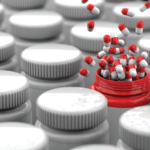Previously, time-limited monopolies were granted to innovators on an ad hoc basis. The Venetian statute codified the process, making such monopolies available to any inventor, not just the well connected.
Patents Ad Absurdum
Prior to World War II, the scientific community largely eschewed drug patents:5
[M]ost pharmacists and physicians participating in the discovery and study of therapeutic agents have opposed their patenting if not their commercialization. Historians of medicine have accordingly recalled the stands taken by the British Medical Research Council, the American Pharmacological Association, the American Medical Association, or the French Académie de Médecine against patents and more generally against intimate collaborations between medical researchers and the drug industry on the grounds that such connections would result in conflict of interests, threaten the open circulation of knowledge, and hinder public access to therapies essential to life.
Moral opposition to drug patents waned after World War II, largely due to a drug you may have heard of: penicillin. While Alexander Fleming discovered penicillin in 1928, it was Howard Florey, PhD, who discovered in 1940 how to manufacture enough penicillin to test in humans. Dr. Florey, working with Andrew J. Moyer, PhD, an American scientist in the U.S. Department of Agriculture’s North Region Research Laboratories at Peoria, Ill., developed a method to produce penicillin in even larger quantities.6
Dr. Florey refused to patent the process, believing it would be immoral to keep this information away from those who might benefit. The American scientist, Dr. Moyer, had no such compunction and was awarded a patent in 1948 that listed him as the sole inventor of the process.7
In the U.S., both patent law and U.S. Food & Drug Administration (FDA) law govern the exclusivity rights for new pharmaceutical products. Even without a patent, the FDA will grant a five-year exclusivity period for a new chemical entity (NCE) used in a drug. During these five years, no other company can submit an Abbreviated New Drug Application (ANDA) to the FDA for a drug product containing the NCE. In practice, this five-year period often becomes a six- or seven-year period of exclusivity because it often takes the FDA two or more years to review and approve an ANDA once filed.8 For biologics, seven years of exclusivity is automatically granted. Additional time is also routinely granted for pediatric and orphan drugs.
One year after a generic drug enters the market, on average, the price of the drug drops by more than 60%. The manipulative use of patents contributes substantially to total healthcare costs.

